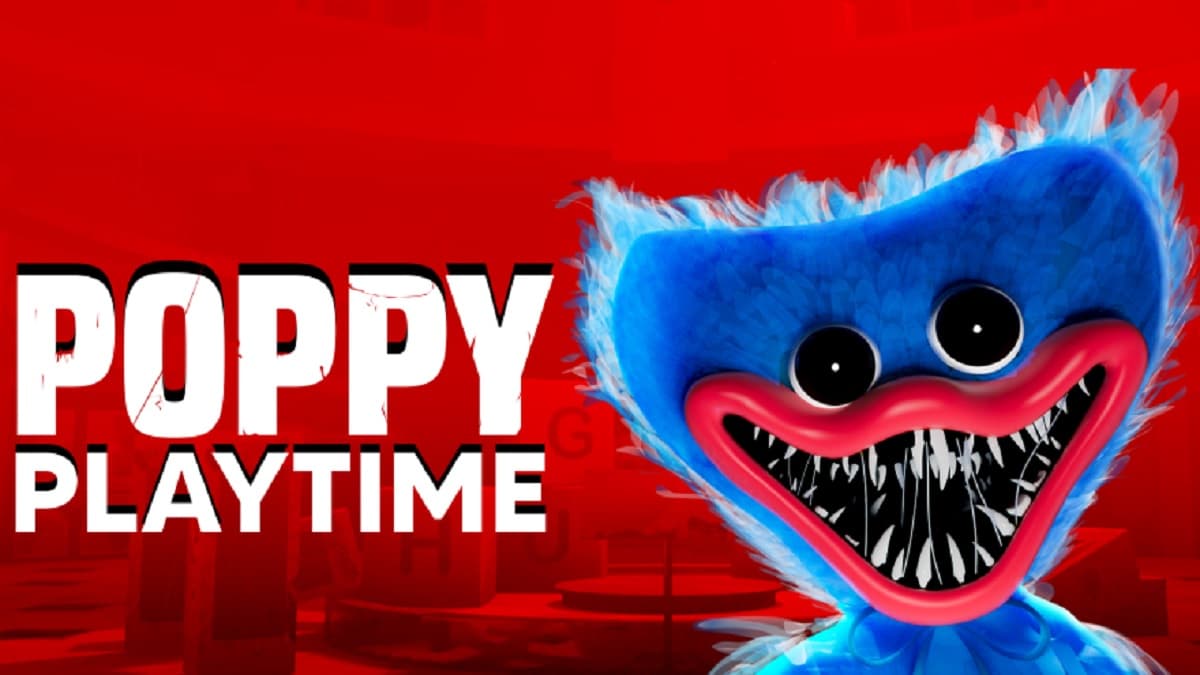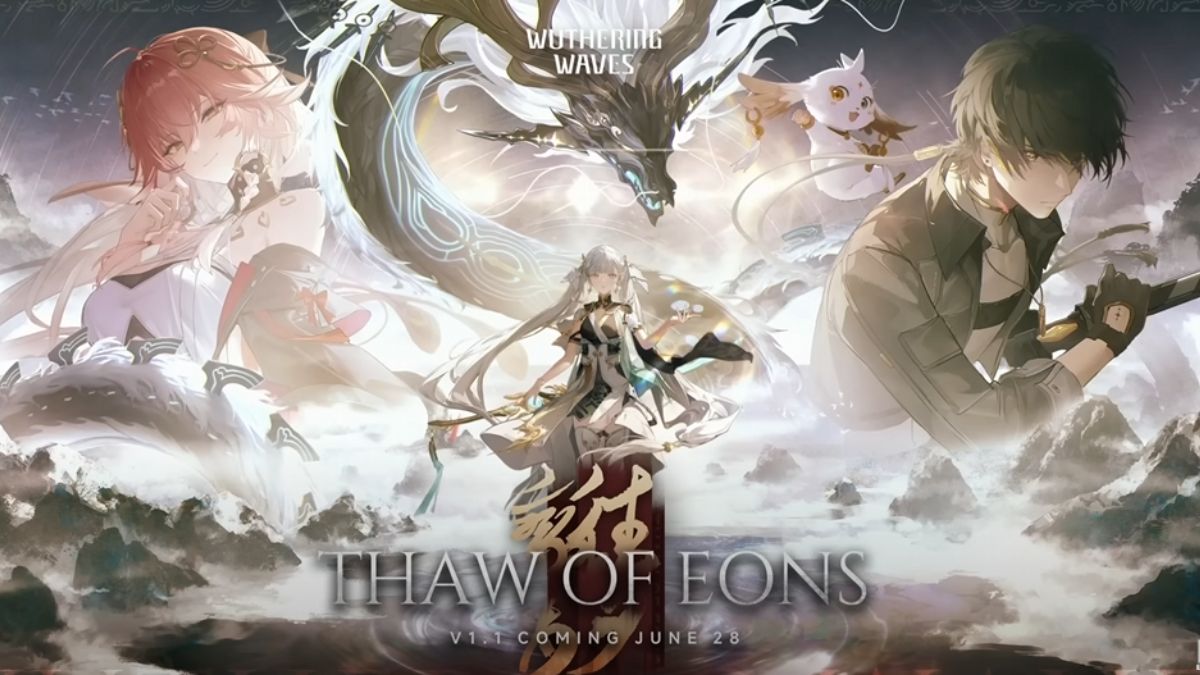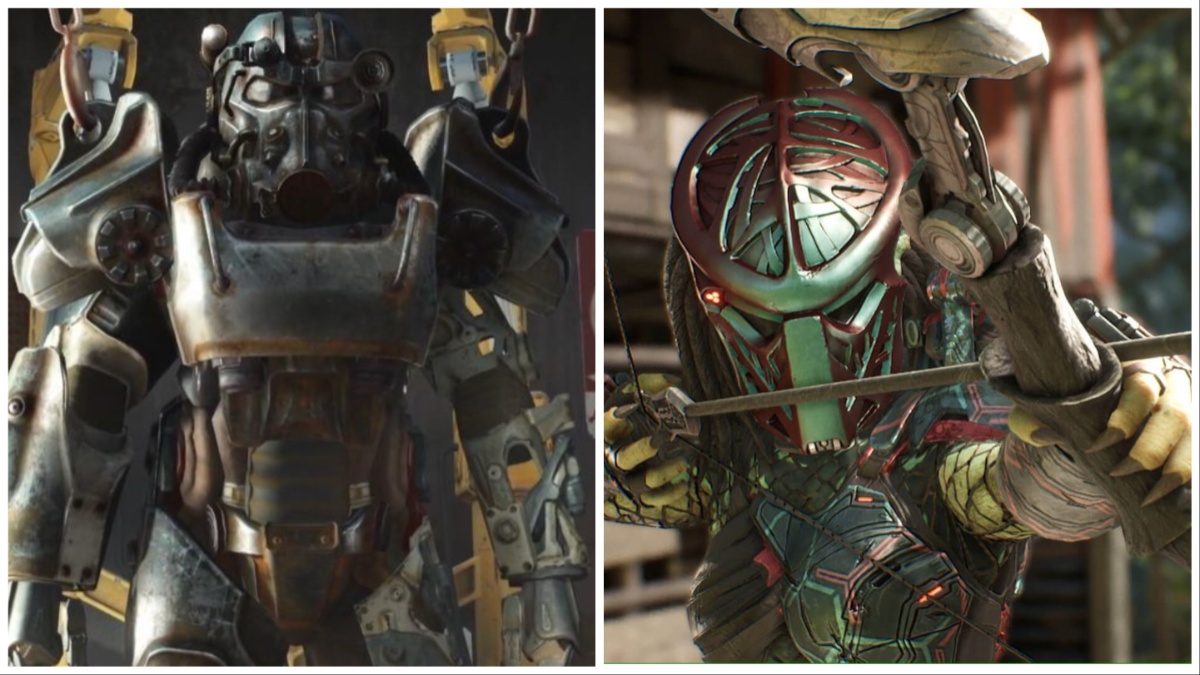Welcome to [Kick It], where we chat with developers and creators about Kickstarter.
Chain Gang Chase is a 2D 1-8 player couch co-op game for Ouya and PC/Linux/Mac that chains you to your friends together as you all collaborate in a sprint for freedom.
Players must work together to avoid trees, open gates, and get the chain gang moving through countless user-made mazes created via the online map-editor. Each player in the game is one member of an escaped chain gang running through a maze of trees in search of a timely train to cut their chains. On the way to the tracks, they must work together to avoid trees, solve puzzles, and evade detection and capture. Oh, and try not to get stuck. Once players finally reach the tracks, it is a race to stretch their chains over the tracks while not getting so close as to be run over by the oncoming train. The game will be free to try and retail for about $5.
Today we’re talking with RIT Professor Joe Pietruch about his Kickstarter for Chain Gang Chase.
Joe Pietruch is a professor at the School of Interactive Games and Media at RIT. He and a small group of students are creating this couch co-op game by taking advantage of RIT’s MAGIC Center and the Ouya’s “Free the Games Fund”. Joe is looking for Kickstarter funding to help pay his students and really use the project as not only a promising title, but also as a great learning experience for his undergraduate students.
Chain Gang Chase seeks to take elements of cooperative/competitive games, like Super Mario Brothers Wii and Castle Crashers, and create a fun and dynamic experience designed to played in one room. Players may have to literally share the same controllers (or keyboards) so get ready to get cozy!
Pietruch had been working on Chain Gang Chase primarily as a one-man team since June of 2013, before turning to Kickstarter for funding. He hopes to use this funding to complete the game with audio and visual talent and bring on more students to make this the best game it can be. Right now, the game offers very basic “programmer art” and is only a pre-alpha prototype, but with funding it will grow into a fully realized title.
As I happen to live in Rochester, and actually work part-time at RIT, I was able to sit down with Joe in his office a few days ago and ask him some questions about the game and his experience with Kickstarter. The following is the transcript of our conversation. If you want more information about the game, check out the Kickstarter page and visit the website (with working map editor) here.
So, who are you, what’s your background in gaming, and how did you get to be a professor at RIT?
JP: “Well, I’m Joe Pietruch. I’ve been a professor at RIT for three and a half years now. Before this I was a Game Design and Development grad student here and before that I was a New Media Design undergraduate here. So I have a BA in NMD which is sort of art/media/graphics/motion graphics/3D/and other art related computer stuff.
“I am originally from Utica, New York…Well, Marcy NY, but more people know about Utica. A little over two hours east of here. I came here from highschool, did undergrad then grad then they offered me a position teaching. So I’ve been in Rochester almost ten years now.”
Good for you
JP: “Haha, I’m not sure if I’m proud or ashamed of that. But, I mean, Wegmans, come on.”
Tell us about your Kickstarter
JP: “So, the Kickstarter project is for a game called Chain Gang Chase and it is a multiplayer couch co-op with up to 8 players simultaneously chained together running through this maze-like world trying not to snag on trees, go through gates and sensors that unlock different paths as you go through. Eventually, at the end of the level there are train tracks where you stretch your chain across the tracks and the train will come by and cut them… or it will kill you if you happen you be standing in the way.”
So even if you get to the end, you could still lose horribly?
JP: “Yeah! And that’s where the prototype is at right now. We have visions of dogs chasing you and different sorts of terrain and things for you to pick up and interact with. The idea is that there might be multi-train maps that bridge off into this larger world. And, if you happen to die, as a convict, then you come back as a prison guard or rookie-cop-deputy-guy to chase the players. It’s a lot of fun, we’ve done a lot of play test events. People come by and play it.”
If this is a prototype mode right now, is the current art style what you are going with or will that change?
JP: “Uh, no, it will be much better than that. This is just programmer art right now! I’m actually nervous, I’m not sure how many people know that! We have plans to do, not exactly pixel art but sprite graphics. We actually have plans to make each of the individual assets layered so that they’ll splay one way or the other depending on how far up or down the screen they are. That way we’ll get a pseudo 3D effect.
What has the timeline of this been so far? When and how did it start?
We have visions of dogs chasing you and different sorts of terrain and things for you to pick up and interact with.
JP: “Two years ago, I backed the Ouya on Kickstarter, got my dev kit, and starting messing around with some stuff. I really like the idea of couch co-op games. I played a lot of Castle Crashers and New Super Mario Brothers Wii and liked the competitive/collaborative co-op those games had going on. I knew I wanted to make a couch co-op and somewhere between that and the prototype I thought “Hey, let’s chain players together and have them run through a maze” because what could be more fun than that?”
That would definitely force people into that couch co-op mode! I honestly can’t see this working any other way, doesn’t seem suited for online play.
JP: “Well, people have been asking for networking, or at least local area networking (LAN).. We’ll see what happens. LAN might work, it still gets players to be in the same room at least. Otherwise, my concern is actually the technical requirements behind networking. Because your movement directly influences the other players’ movement, there are some things that you have to worry about there.
“Anyways! I came up with the game idea around June of this year (2013). I did about a 20-25 day sprint, working between 4 and 6 hours a day to get the prototype to where it is today. That includes the game itself, the rudimentary art assets that are there, as well as the website that goes along with the game. We have the map editor up online and anyone can make a map for the game. Actually, none of the maps that are in there were actually coded on my computer, they were all done through the map editor in the browser. So it’s been downloading maps from day one.”
So, are you making your students go make maps for you?
JP: “Haha, no! I’m not making my students do anything! Towards the end of class I’ll post update and say “here’s where it’s at and if you want to do this, that’s cool.” With a heavy disclaimer that backing or not backing has no impact on their grades. There are some ethical concerns there that want to try to steer away from!
“In the updates I’ve been featuring some of the user maps. It’s actually encouraged a lot of people to make maps. When people are play testing and they find out that “I can make map, right now?” They’ll just open their laptop and put one to together real quick and come right back to play it.
“We have some ideas for improvements there too, we want to implement some sort of logic that sees if the level is actually playable. Because it’s totally possible to just make a straight line of trees across the level and it’ll be impossible to win.”
(Map “Bytewise” by CommKeen)
What would you say is the one thing you are most proud of or most excited about with this game?
JP: “There are actually a lot of things that I’m happy with. I think the map editor and the success we’ve had getting people to make maps and very interesting maps is very cool. I’m also excited that all the money from the Kickstarter is going to be funding students to work on the game. So I’ll be managing a small team of awesome programmers and artists putting this thing together.”
Will those be undergrads or grad students?
JP: “Those will be probably undergrads. I’m not ruling the out the possibility of grad students. But, really, undergrads need the experience more in the sense of the whole RIT co-op thing: getting students real working experience on a full scale project.”
Did you approach RIT about getting funding for this project? Since it will be student oriented?
JP: “No, I didn’t. I probably could have, but this whole Kickstarter idea started with the Ouya “Free the Games Fund” campaign that they’re running. Basically, right now if you have a campaign (between this August and next August) that reaches 10k and above, they’ll double your funds. So I thought, hey, I’ll get some publicity, double what we raise, and pay some students.”
If the Kickstarter were to fail, what would the contingency plan be? It sounds like you’d just make it anyways..
JP: “Yeah, we’d make it anyways. The thing is, right now, I actually have a list of 30 or 40 students that want to work on this, and I’m going to have a hard time stopping any of them from helping me, haha. We’re going to work on what sort of avenues we can use to get anyone who wants to work on this the ability to do so.
“As far a contingency plan for failure? Well, we’d try to do it anyway. I mean, it wouldn’t get as much as a priority in terms of how I’m working on it and how much time I can devote to it as opposed to how much I could if it was funded. Plus, if we are funded then I’ll have that obligation to the backers to deliver on this thing. We’re planning to launch at the end of May (2014).
“The project would still run. But I’m just not sure in what capacity we’d be able to bring on students.”
Kickstarter Questions
What advice would you give for creators looking to use Kickstarter?
JP: “Read. Everything that you can – there are so many good blog posts out there that have really good advice, walk-throughs of the whole process, Dos and Don’ts, tips and tricks, and all sorts of stuff. The Magic Center actually paid a student to work with me 10 hours a week during preparation, and he’s working with me now, running the Kickstarter campaign–
What is the Magic Center?
JP: “The Magic Center is this organization down in the Center for Student Innovation. They are an up and coming group here at RIT and their whole idea is to provide students an avenue to bring their work to the center, work it through to full production, and actually publish it out to the world. Magic is actually a full LLC corporation with all of the business and legal stuff. It’s very new. It’s also this great interface for companies to come in and say “We have this great idea, but have no idea how to do it ourselves, do you have any students that could work on it?” There’s this great synergy about learning through making things.
“And the cool thing about it is that any faculty on campus, regardless of their department, is allowed to affiliate with the center. And that means they are allowed to make some projects or do cool things or help facilitate things. So, I’ve affiliated with them and we’ll be running the project through the Magic Spell Studios they have down there.”
What do you think is the key to a good Kickstarter?
JP: “Well, I’ll just go through a laundry list of things:
-
You have to have a campaign video, even if it’s terrible, having that video there makes or breaks a campaign.
-
Plan out your publicity ahead of time. I had a lot of good fortune picking up random interviews here and there, like this one, but you should try to coordinate with journalists ahead of time. Tell them about the Kickstarter, give them media assets, and ask them if they’d be interested in covering the campaign. Plan that out ahead of time, before the Kickstarter even launches. Get the legwork out of the way because the turnaround time for an interview could take too long, an article might not get published until after the campaign.
-
Try to build a groundswell of users, get a following, before hand. We had a Facebook group going and were talking about it. The idea is to build a following first, then countdown to the campaign launch, and just build hype. That way your project launch will be strong and you can gain momentum to carry you through the campaign.
-
Talk to everyone about it, but don’t be spammy. Make sure to play nice with the community and be nice, maybe you can start a dialogue and generate some interest.
If you were to redo the campaign, what would you change?
You have to have a campaign video, even if it’s terrible, having that video there makes or breaks a campaign.
JP: “I’d be better about planning my publicity earlier. I’d probably look into analytics about what day of the week to launch a Kickstarter. I wanted to have a little bit clearer picture of what the backer rewards will be – if you look now, things are better and I have pictures up. But I want to more visually represent what people will get at the end of the process. Having a really polished article and project description – it could have been better. One thing I thing we did really well was plan out our budget out ahead of time with planning for the tiers. Because the campaign is doing well and no one is commenting about bad things suggests that we’re doing something right.”
Well, that just about wraps up my questions. Anything else you’d want to add?
JP: “Again, the artwork is not final. Also, in my last update I gave out a campaign challenge, if we reached 70% funding by this monday I’ll shave my head. So, we were about 17% away from that on the day I announced the update. And now (at time of interview) we’re about…1% away from that. So I have a feeling I’ll be shaving my head tonight! [Editor’s note:he did!] Engaging with your audience is important. I’ll be recording and streaming that on Twitch live. So, I’m enjoying my hair while I still have it. And then we have another play test event on Sunday.”
How do these play test events work?
JP: “Basically, I just set up the game in a public space on campus and invite people to play. I’m also streaming them live on Twitch, so anyone remote can log on and watch it. Then I can push those Twitch streams over to YouTube so people can watch them later. This is going to be the first play test with the gates and sensors working, before it was just trees but now you’ll all have to work together to stand in one spot to unlock the gates and proceed through the level.”
In Closing
I want to extend a warm thanks to Joe Pietruch for taking the time to answer my questions! If you are looking for more details about the Chain Gang Chase project you can visit the very active Facebook page, the not-as-active Twitter @ChainGangChase, and also-very-active Kickstarter page. Also, you can visit chaingangchase.com and make some game maps!
—
Do you have a Kickstarter campaign or project you’d like to see talked about on GameSkinny? Drop me a tip for future [Kick It] articles on Twitter @ZacaJay!
Or, you know, write about it yourself!






Published: Nov 13, 2013 12:12 am